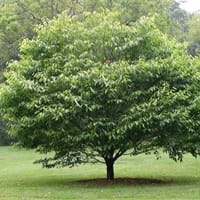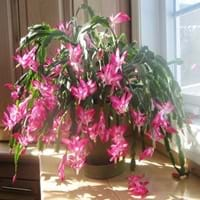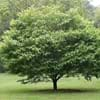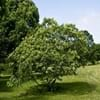Life Span
Perennial
Perennial
Type
Tree
Cactus or Succulent
Origin
North America, United States, Northeastern United States, Mid-Atlantic United States, Southeastern United States, Central United States, South-Central United States, Texas, Mexico, Europe
North America, Latin America and the Caribbean, Central America, South America
Types
Carpinus caroliniana caroliniana, Carpinus caroliniana virginiana
Not Available
Number of Varieties
Not Available
Habitat
Not Available
Coastal Mountains, Humid climates
USDA Hardiness Zone
3-9
Not Available
Sunset Zone
1a, 1b, 2a, 2b, 3a, 3b, 4, 5, 6, 7, 8, 9, 14, 15, 16, 17
Not Available
Habit
Spreading
Clump-Forming
Flower Color
Yellow, Yellow green
Purple
Flower Color Modifier
Bicolor
Not Available
Leaf Color in Spring
Green, Light Green
Green, Dark Green
Leaf Color in Summer
Dark Green
Green, Dark Green
Leaf Color in Fall
Yellow, Yellow green, Orange Red
Green, Dark Green
Leaf Color in Winter
Not Available
Green, Dark Green
Leaf Shape
Pinnate
Toothed
Plant Season
Summer, Fall
Spring, Summer, Fall, Winter
Sunlight
Full Sun, Partial Sun, Partial shade, Full Shade
Partial Sun, Partial shade
Type of Soil
Clay, Loam
Loam, Sand
The pH of Soil
Acidic, Neutral
Acidic, Neutral
Soil Drainage
Average
Well drained
Bloom Time
Spring
Not Available
Tolerances
Wet Site
Not Available
Where to Plant?
Ground
Container, Ground, Pot
How to Plant?
Not Available
Stem Planting, Transplanting
Plant Maintenance
Medium
Medium
Watering Requirements
Requires regular watering
Average Water Needs, Do Not over Water, Never Over-water
In Summer
Lots of watering
Lots of watering
In Spring
Moderate
Moderate
In Winter
Average Water
Average Water
Soil pH
Acidic, Neutral
Acidic, Neutral
Soil Type
Clay, Loam
Loam, Sand
Soil Drainage Capacity
Average
Well drained
Sun Exposure
Full Sun, Partial Sun, Partial shade, Full Shade
Partial Sun, Partial shade
Pruning
Requires very little pruning
Prune if you want to improve plant shape, Requires little pruning
Fertilizers
All-Purpose Liquid Fertilizer
All-Purpose Liquid Fertilizer
Pests and Diseases
Canker, fungus
Red blotch
Plant Tolerance
Wet Site
Drought
Flower Petal Number
Not Available
Not Available
Fragrant Leaf
Not Available
No
Foliage Texture
Medium
Bold
Foliage Sheen
Glossy
Glossy
Attracts
Not Available
Not Available
Allergy
Not Available
Eye irritation, sneezing
Aesthetic Uses
Showy Purposes, small hedge
Beautification, Landscape Designing, Showy Purposes
Beauty Benefits
Good for the Scalp, Stops hair loss
Not Available
Environmental Uses
Air purification
Air purification
Medicinal Uses
Anxiety, Bleeding, Cold, Cough, Cuts, Eye Infection, Fatigue, Fights Depression, Insomnia, Menstrual Disorders, Wounds
Not Available
Part of Plant Used
Whole plant
Leaves
Other Uses
Used as firewood, Used as Ornamental plant, Used for its medicinal properties, Used for woodware
Decoration Purposes, Showy Purposes, Used as Christmas Tree, Used as Ornamental plant
Used As Indoor Plant
No
Yes
Used As Outdoor Plant
Yes
Yes
Garden Design
Hedges, Screening / Wind Break, Shade Trees, Street Trees
Container, Houseplant, Rock Garden, Wall
Botanical Name
CARPINUS caroliniana
SCHLUMBERGERA x buckleyi
Common Name
American Hornbeam, Musclewood, blue-beech, Ironwood
Thanksgiving Cactus, Crab Cactus
In Hindi
अमेरिकी हानबीन
क्रिसमस कैक्टस
In German
Amerikanische Hainbuche
Weihnachtskaktus
In French
Charme de Caroline
Cactus de Noël
In Spanish
Carpinus caroliniana
Cactus de Navidad
In Greek
american γαύρο
Χριστούγεννα Cactus
In Portuguese
Carpinus caroliniana
Cacto de Natal
In Polish
Grab amerykański
Christmas Cactus
In Latin
american hornbeam
Nativitatis Cactus
Phylum
Magnoliophyta
Magnoliophyta
Class
Magnoliopsida
Magnoliopsida
Order
Fagales
Caryophyllales
Family
Betulaceae
Cactaceae
Genus
Carpinus
Schlumbergera
Clade
Angiosperms, Eudicots, Rosids
Angiosperms, Core eudicots, Eudicots
Tribe
Not Available
Not Available
Subfamily
Not Available
Cactoideae
Number of Species
Not Available
Season and Care of American Hornbeam and Christmas Cactus
Season and care of American Hornbeam and Christmas Cactus is important to know. While considering everything about American Hornbeam and Christmas Cactus Care, growing season is an essential factor. American Hornbeam season is Summer and Fall and Christmas Cactus season is Summer and Fall. The type of soil for American Hornbeam is Clay, Loam and for Christmas Cactus is Loam, Sand while the PH of soil for American Hornbeam is Acidic, Neutral and for Christmas Cactus is Acidic, Neutral.
American Hornbeam and Christmas Cactus Physical Information
American Hornbeam and Christmas Cactus physical information is very important for comparison. American Hornbeam height is 610.00 cm and width 1,070.00 cm whereas Christmas Cactus height is 45.70 cm and width 71.10 cm. The color specification of American Hornbeam and Christmas Cactus are as follows:
American Hornbeam flower color: Yellow and Yellow green
American Hornbeam leaf color: Green and Light Green
Christmas Cactus flower color: Purple
- Christmas Cactus leaf color: Green and Dark Green
Care of American Hornbeam and Christmas Cactus
Care of American Hornbeam and Christmas Cactus include pruning, fertilizers, watering etc. American Hornbeam pruning is done Requires very little pruning and Christmas Cactus pruning is done Prune if you want to improve plant shape and Requires little pruning. In summer American Hornbeam needs Lots of watering and in winter, it needs Average Water. Whereas, in summer Christmas Cactus needs Lots of watering and in winter, it needs Average Water.





